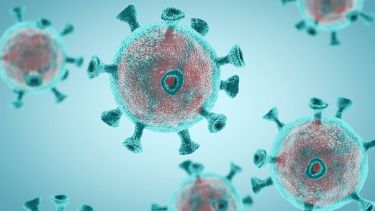- One year on from sequencing their first Covid-19 genome sequence, Sheffield COVID-19 Genomics Group find new mutation in UK variant of Covid-19
- Increased expression of the viral genome and, as well as mutations to the ‘spike protein’, a mutation in nucleocapsid might contribute to the variant’s ability to infect at higher rates
- New mutations could affect the regulation of our immune system
- Global co-operation and timely sharing of research nationally have played a major role in the ability of the team to develop novel processes to conduct surveillance on SARS-CoV-2 variants
A year on from being one of the first teams nationally to publish sequenced genomes of the Covid-19 virus, researchers at the University of Sheffield have released new findings which could shed light on why the UK variant is more infectious.
The B.1.1.7 variant of SARS-CoV-2 was discovered in Kent, UK in December 2020, and has since spread across the globe, contributing to the increase in cases being seen in Europe and the UK’s own second wave of the pandemic earlier in the year.
As well as mutations to the ‘spike protein’ the virus uses to hijack our cells, the Sheffield COVID-19 Genomics Group has found that an additional mutation in the nucleocapsid gene could affect the viruses subgenomic RNA production which could make it more effective at evading our immune systems, allowing more replication and resulting in the higher-viral load and increased transmissibility of this variant.
In every SARSCoV-2 viral particle is the genome of the virus, these are the instructions for construction of new SARS-CoV-2 particles and tools that help it evade our immune systems. For example, it contains instructions on how to build the spike protein. To hijack our cells’ machinery to do this construction it must translate these instructions to a language that our cells can understand. To do this it makes short copies of the genome called subgenomic RNA.
The team has previously developed a computational tool called periscope, that can search for these subgenomic RNAs. They used it to compare levels of subgenomic RNA in variants of the virus and found that the B.1.1.7 variant has many more copies of these messages, and that they also appear more quickly in a patient’s infection.
The team also discovered an entirely new subgenomic RNA, which contains the instructions for what could be a protein called ORF9b. Present in increased amounts in the UK variant, ORF9b has previously been shown to regulate our immune response.
Clinical Bioinformatics Core Scientist Matthew Parker, from the University of Sheffield’s Department of Neuroscience, developed periscope which detects subgenomic RNAs. He said: “The existence of subgenomic RNA messages is not a new finding, but comparisons between the levels of these messages in different variants of SARS-CoV-2 has not previously been carried out. It appears that B.1.1.7 (UK Variant) has more of these messages than previous variants, and they are present earlier in infection”
“Our analysis also detected a new subgenomic RNA message in the B.1.1.7 variant which contains the instructions for a protein (ORF9b) that has been shown to regulate our immune system’s response to the virus. If B.1.1.7 is better at regulating our immune response it could explain why it spreads faster than other variants, and why it may be associated with a higher-viral load.”
Since the start of the pandemic, the whole genome sequencing of SARS-CoV-2 has been critical to form part of a worldwide emergency response to the outbreak, and allow scientists around the world to develop vaccines by understanding how the virus spreads and mutates.
Contributing thousands of genome sequences to the COVID-19 Genomics UK Consortium and making this data available to access globally via GISAID, the international viral sequence database, the team at Sheffield have had unprecedented access to the data needed to respond rapidly with solutions during a fast-changing global pandemic.
Matthew Parker added: “If we could use a tool such as periscope on all genomic data as it is generated worldwide, we might get more information as new variants are discovered.
“This could tell us quickly if there are any changes to the messages these new variants produce, and provide an early warning system that a variant may be behaving differently and may require national intervention.”
Dr Thushan de Silva, Senior Clinical Lecturer and Honorary Consultant in Infectious Diseases at the University of Sheffield, said: “The capabilities we have developed have been crucial for Sheffield to expand our sequencing capabilities to conduct surveillance on SARS-CoV-2 variants.
“Research such as this gives us the ability to identify and analyse variants of SARS-CoV-2 much more quickly and effectively, and going forward, will help in identifying what could turn out to be more severe variants of the virus earlier, potentially saving lives.”
The team believes urgent follow up studies are needed to find out if the additional message discovered results in increased production of the ORF9b protein. Groups around the world are comparing the immune response in B.1.1.7 to previous variants, and data so far seems to support the hypothesis of B.1.1.7 being better adapted to regulating our immune response.



